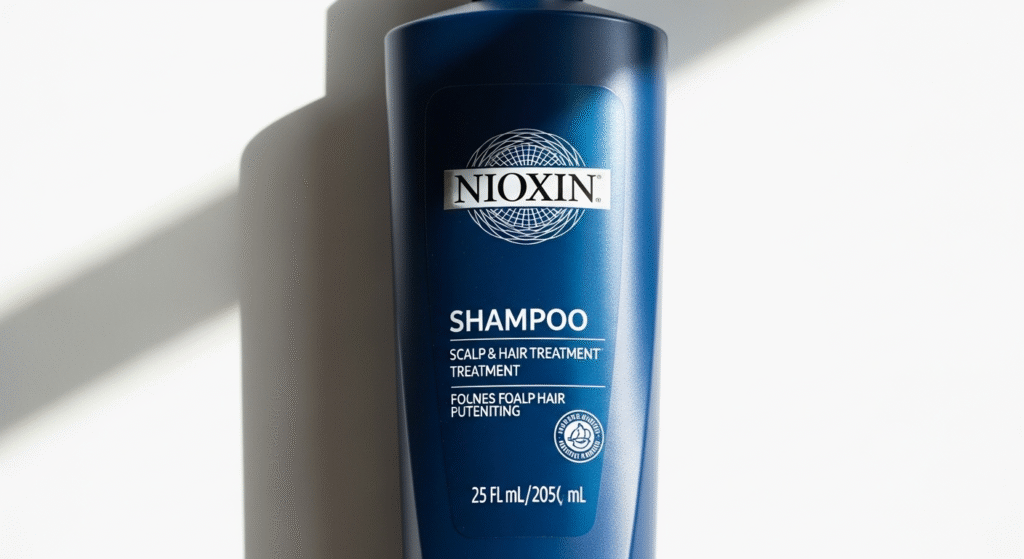Worried that Nioxin might be making your hair fall out instead of helping it grow? You’re not alone. Many people notice increased shedding after starting Nioxin and wonder if the product is to blame.
In this article, we’ll explore Can Nioxin cause hair loss, break down its ingredients, clarify the “shedding phase,” and offer expert-backed answers. You’ll leave with a better understanding of whether Nioxin is helping or hurting your hair—and what to do next.
What Is Nioxin and How Does It Work?
Overview of the Nioxin System
Nioxin is a hair care brand that offers multi-step systems aimed at improving scalp health and hair density, especially for people experiencing thinning hair. Their systems typically include a cleanser (shampoo), scalp therapy conditioner, and scalp & hair treatment.

Active Ingredients and Their Intended Effects
- Menthol: For a tingling sensation that stimulates the scalp.
- Salicylic Acid: Helps exfoliate dead skin and reduce sebum buildup.
- Niacinamide (Vitamin B3): Promotes scalp blood flow.
- Botanical Extracts: Offer antioxidant benefits and a fresh scent.
How It Claims to Help With Thinning Hair
Nioxin doesn’t claim to regrow hair like Minoxidil. Instead, it focuses on creating an optimal scalp environment for hair to grow thicker and healthier. It may remove debris and excess oil, reduce inflammation, and improve follicle function over time.
Common Concerns: Can Nioxin Actually Cause Hair Loss?
The Shedding Phase Explained
Some users report increased shedding in the first few weeks of using Nioxin. This may be a normal “detox” phase, where weaker hairs are shed to make way for stronger, healthier ones—a process similar to what happens with other hair growth treatments.
User Experiences vs. Clinical Evidence
- Many online reviews mention temporary shedding after use.
- There’s no clinical evidence that Nioxin causes long-term hair loss.
- Some dermatologists suggest the initial shedding is part of the natural hair cycle being reset.
Is Hair Loss a Side Effect of Scalp Stimulation or Detox?
Scalp stimulation and exfoliation can temporarily increase hair fallout by loosening hairs that were already in the telogen (resting) phase. This is not hair loss caused by damage, but rather a normal turnover process.
Understanding the Science: Ingredients That May Trigger Shedding
Menthol and Scalp Sensitivity
Menthol increases blood circulation but can irritate sensitive scalps, potentially causing inflammation and, in rare cases, breakage or shedding.
Salicylic Acid and Exfoliation
This ingredient helps unclog follicles and remove buildup, but over-exfoliation might irritate the scalp, especially if used too frequently or with other active treatments.
DHT Blockers and Hormonal Effects (If Any)
Nioxin does not contain medical-grade DHT blockers like finasteride. However, some formulations include natural extracts believed to counteract DHT. While not proven to cause hair loss, this can interact with other scalp treatments and cause unexpected results in sensitive users.
How to Know If Nioxin Is Causing Your Hair Loss
Normal vs. Abnormal Hair Shedding
- Normal: Shedding 50–100 hairs/day is typical.
- Concerning: Large clumps or noticeable thinning after 6+ weeks of consistent use.
Timeline of Expected Results
- Weeks 1–4: Some shedding may occur.
- Weeks 5–8: Hair density may stabilize.
- Week 9+: Improvement in thickness, if the product is suitable.
Red Flags to Stop Using the Product
- Scalp redness, itching, or burning
- Continuous shedding beyond 2 months
- Visible scalp patches or inflammation
What to Do If You Experience Hair Loss from Nioxin
Stop Usage or Consult a Dermatologist?
- If shedding is mild and short-term, give it 6–8 weeks.
- If it worsens, consult a trichologist or dermatologist.
Alternatives to Nioxin for Hair Thinning
- Ketoconazole shampoo for inflammation
- Minoxidil for growth stimulation
- PRP therapy or FUE hair transplant for advanced cases

How to Support Hair Regrowth Post-Shedding
- Use gentle, sulfate-free shampoos
- Avoid tight hairstyles and harsh brushing
- Consider a nutritional supplement for hair (biotin, iron, zinc)
FAQs About Nioxin and Hair Loss
Is shedding normal after starting Nioxin?
Yes, a short-term shedding phase is common and usually not a cause for concern.
How long does Nioxin take to work?
Most users see results in 30 to 90 days, depending on hair type and scalp health.
Can Nioxin be used long-term?
Yes, it is designed for consistent use and may support scalp health over time.
Is it safe for all hair types?
Generally, yes, but sensitive scalps may react to ingredients like menthol or salicylic acid.
Should I consult a hair specialist before using it?
It’s wise, especially if you have underlying hair loss conditions.
Speak to a Hair Specialist
If you’re unsure whether Nioxin is helping or harming your hair, don’t guess—get a professional diagnosis. Book a consultation with Dr. Rana Irfan, Pakistan’s leading ABHRS and ISHRS-certified hair transplant expert. Whether you need topical solutions, PRP, or a long-term plan, you’ll get medically sound advice tailored to your hair needs.
